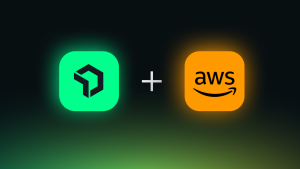Service-level agreements (SLAs) are pivotal contracts between customers and service providers, ensuring a specific level of service performance and availability. They are crucial for optimizing business processes, enhancing customer satisfaction, and holding service providers accountable. However, SLA breaches can quickly erode customer trust, fracture business relationships, and tarnish reputations.
What is an SLA breach?
An SLA breach is a situation in which one party fails to meet the terms and conditions outlined in a Service Level Agreement (SLA). An SLA defines the level of service expected, including performance metrics, response times, availability, and other relevant criteria. When the service provider fails to meet these agreed-upon terms, it constitutes an SLA breach. This breach may trigger penalties, compensation, or other remedies as specified in the SLA. It's essential for both parties to monitor and manage SLAs carefully to ensure compliance and maintain a satisfactory level of service.
This blog presents expert strategies to efficiently identify, prevent, and manage SLA breaches, with a special focus on how New Relic can be your ally in this process.
How to avoid SLA breaches
Preventing SLA breaches is crucial for maintaining customer trust, ensuring service quality, and avoiding potential penalties. Here are key steps you should take to avoid them.
Step 1: Crafting a data-driven SLA to prevent breaches
A robust SLA is the foundation of any service agreement. It's not just a document but a mutual understanding between service providers and customers. Crafting a comprehensive and understandable SLA is the first step in preventing SLA breaches. This agreement should articulate specific service levels, performance metrics, monitoring intervals, and target values. It's essential to ensure that both parties clearly understand mutual expectations, thereby avoiding potential disputes. Moreover, a well-defined policy outlining the course of action for breached SLA scenarios is crucial. It sets the tone for accountability and provides a roadmap for resolution.
However, even the most meticulously crafted SLA is useless without continuous monitoring and analysis. This is where data comes into play. Efficient data collection and analysis processes are the linchpins in avoiding SLA violations. Service providers must relentlessly monitor service quality, gather relevant data, and assess SLA efficacy. In this data-driven era, analytics are an early warning system, flagging potential SLA breach risks and issues. By harnessing this data, service providers can take preventive actions, ensuring timely interventions and minimizing the risk of SLA violations.
New Relic APM SLA reports are a game changer for developers keen on leveraging data for SLA management. They offer invaluable insights into application performance, showcasing application downtime and trends over time. These reports not only help in understanding current performance metrics but also in predicting potential SLA warnings. With New Relic, developers are equipped with the tools and insights to not just react to SLA breaches but to avoid them proactively.
Step 2: Implementing alerts for an early SLA warning
Adopting a proactive stance is critical to enhancing customer satisfaction and trust. Leveraging proactive alerting mechanisms and preemptive warning systems is an excellent place to start. These systems are designed to anticipate unfavorable SLA performance shifts, issuing automatic notifications when performance deteriorations or breaches are detected. This proactive approach ensures that issues are addressed promptly, paving the way for swift responses.
New Relic alert and proactive detection features are designed to enhance alert quality and significantly reduce false alarms using cutting-edge AI technology. By harnessing AI algorithms, New Relic can sift through vast amounts of data, identifying patterns or anomalies that might hint at potential issues or performance degradation. The proactive detection feature employs AI to understand normal performance baselines and is adept at detecting deviations from these baselines. This capability empowers developers to address issues before they escalate and impact users proactively.
Moreover, the AI-powered alerting system of New Relic is a boon for developers inundated with alerts. It smartly reduces false noise by applying intelligent thresholding and anomaly detection techniques. This ensures developers receive only relevant and actionable alerts, minimizing alert fatigue and significantly improving alert quality.
Step 3: Rapid response and contingency planning for a breached SLA
To effectively address breached SLAs, it's essential to have a rapid response mechanism and a well-defined contingency plan. New Relic offers capabilities that can be leveraged to achieve this. By integrating runbooks into your alerts, you can provide your teams with step-by-step procedures to address specific issues. This not only speeds up the resolution process but also ensures consistency in addressing similar SLA breaches in the future.
Integrating PagerDuty with New Relic can significantly improve response times. The PagerDuty robust incident response platform, when combined with New Relic monitoring capabilities, ensures that the right people are alerted immediately when an SLA breach is imminent or has occurred. This integration ensures that teams are aware of potential SLA violations and equipped with the necessary information to address them promptly.
Moreover, having a contingency plan in place is crucial. This plan should detail the steps to be taken during an SLA breach, ensuring that service providers can quickly identify the root cause, communicate effectively with customers, and implement solutions. New Relic's comprehensive monitoring and alerting capabilities, with the procedural guidance of runbooks and the immediate alerting system of PagerDuty, form a formidable defense against SLA breaches.
Step 4: Redundancy and backup planning to avoid an SLA breach
Planning for backups and additional capacity against contingencies and surges in demand is essential for smooth SLA performance. Service providers must devise backup and surplus capacity strategies and be ready to deploy them promptly when needed. This strategy reduces downtime and increases customer satisfaction.
By integrating New Relic infrastructure monitoring, service providers can swiftly pinpoint offending infrastructure components, determine incident blast radiuses, and identify root causes. Features such as the ability to visualize up and downstream dependencies using automap and investigate root causes by analyzing related entities, logs, alerts, events, and more contribute to a comprehensive understanding of your infrastructure's health. This not only aids in preventing SLA violations but also ensures that the root cause can be quickly identified and rectified in the event of a breached SLA.
Creating SLAs from Infrastructure metrics provides an added layer of assurance. By monitoring these metrics, you can anticipate potential issues and implement backup strategies or additional capacity to handle surges in demand. This proactive approach ensures that even if one component of the infrastructure faces issues, the backup systems can take over, reducing downtime and enhancing customer satisfaction.
Step 5: Open communication to address and prevent SLA violations
Preventing SLA breaches goes beyond mere monitoring; it's deeply rooted in open communication. Developers often grapple with the question, "How can you prevent breaching SLA?" While the answer is multifaceted, transparent communication is a pivotal component.
Effective management of SLA violations is a dance between service providers and customers. Maintaining regular dialogues on SLA performance and using customer feedback as a compass is essential. This feedback offers invaluable insights, enabling service providers to refine their SLA targets to align seamlessly with customer expectations. But the essence of open communication isn't just dialogue; it's about taking collaborative, actionable steps to address issues.
The New Relic incident management feature is a testament to this philosophy. This feature provides real-time alerts for potential SLA warnings and fosters a collaborative environment for addressing breached SLAs. One of its standout offerings is the ability to create clear postmortems. These aren't just retrospective analyses; they're actionable roadmaps that ensure the same incident doesn't recur, fortifying defenses against future SLA breaches.
Step 6: Continuous monitoring to prevent breaching an SLA
Regular monitoring and reporting of SLA performance are essential for effectively managing SLA breaches. Understanding the intricacies of SLA performance is pivotal. How can you prevent breaching an SLA? The answer lies in continuous vigilance. Service providers must relentlessly track SLA performance, assessing how closely they align with set targets. This diligent practice is the key to detecting potential SLA violations early, ensuring that services are continually improving and minimizing the risk of an SLA breach.
Enter the New Relic service level management feature, a tool designed to empower developers in their quest to avoid SLA breaches. With New Relic, you can define and use service level indicators (SLIs) and service level objectives (SLOs) for your applications to improve the user experience.
But what makes New Relic stand out in preventing SLA violations? It's the user-centric approach. New Relic facilitates the creation of service levels with varying complexity levels, catering to both beginners and advanced users. Their integrated tools, such as Navigator and workloads, allow for a visual representation of service levels, making it easier to spot potential SLA warnings. And in the unfortunate event of a breached SLA, the New Relic "period over period" view mode lets you spot trend changes, and its summary view aids in pinpointing potential causes of the issue. New Relic ensures that you're always one step ahead, ready to tackle any SLA violation that comes your way.
Conclusion
SLA breaches can have severe repercussions for businesses and customers alike. However, employing the right strategies and techniques makes it possible to adeptly identify, manage, and monitor SLA performance. A robust customer-service provider relationship is formed when necessary steps like detailed SLA definition, data collection and analysis, proactive warning systems, embracing technological innovations, emergency planning, backup and redundancy strategies, active collaboration and communication, and constant SLA performance monitoring and reporting are followed to successfully manage SLA breaches. New Relic's comprehensive suite of tools and features can be your trusted partner in this journey.
Next steps
Ready to master SLA breaches with confidence? Dive deeper with New Relic and elevate your SLA management to new heights with these resources:
- Learn how ZenHub tracked core metrics with Infrastructure Monitoring and APM.
- Create modern, complex systems the right way with these SLO and SLI best practices.
Don’t have New Relic? Sign up for free. Your account includes up to 100GB/month of free data ingest, one full-platform user, and unlimited basic users.
The views expressed on this blog are those of the author and do not necessarily reflect the views of New Relic. Any solutions offered by the author are environment-specific and not part of the commercial solutions or support offered by New Relic. Please join us exclusively at the Explorers Hub (discuss.newrelic.com) for questions and support related to this blog post. This blog may contain links to content on third-party sites. By providing such links, New Relic does not adopt, guarantee, approve or endorse the information, views or products available on such sites.


